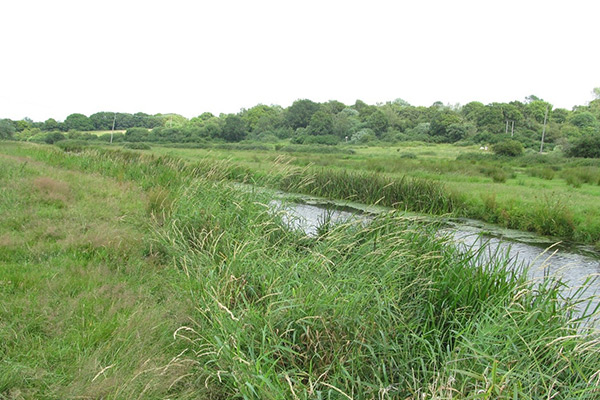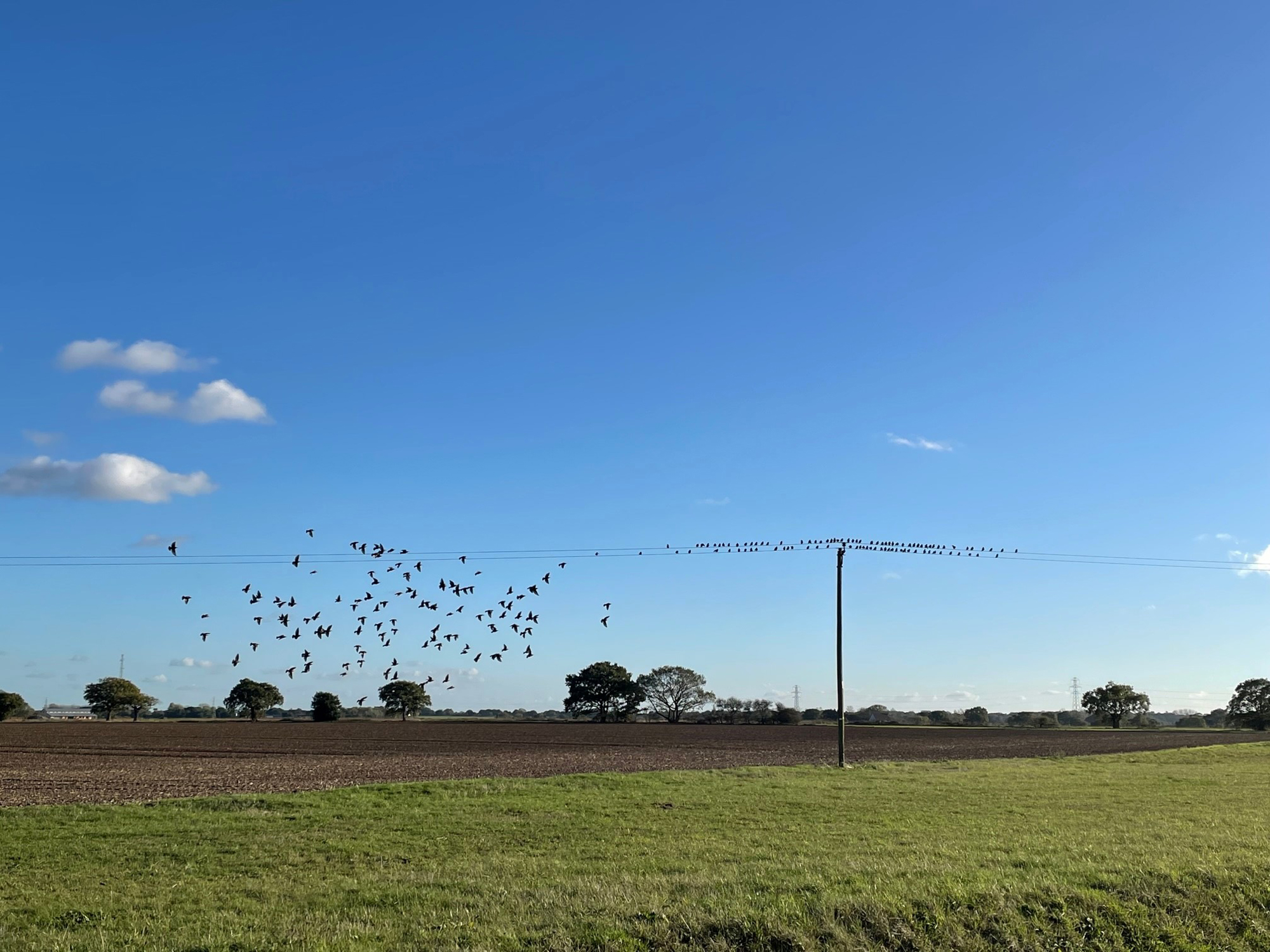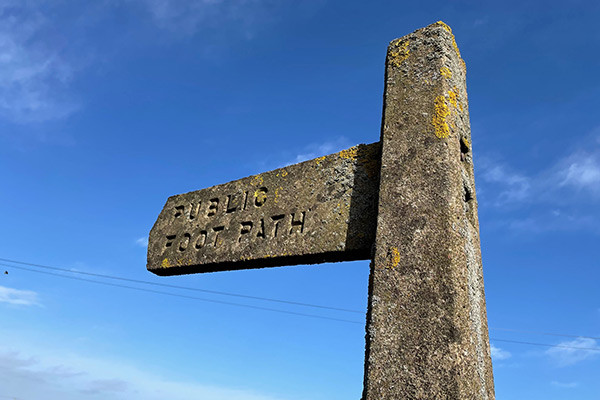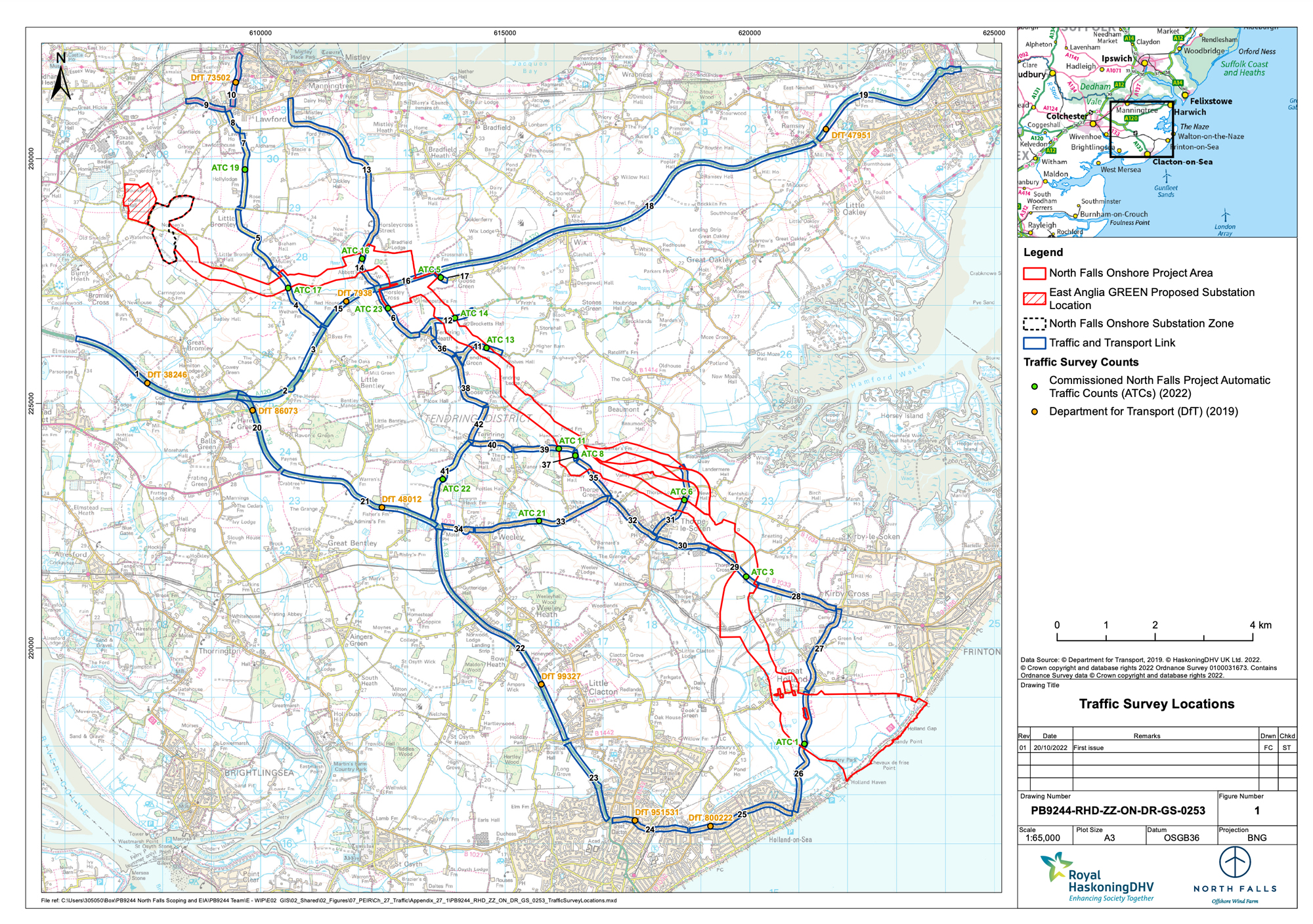The information on this page was correct at the time of publishing (July 2023). The project has since evolved and we would encourage you to read our September update for more information.
Onshore topics
The North Falls PEIR assesses a wide range of potential impacts for physical, biological and human environmental topics for the whole project lifecycle. This page takes a high-level look at the key topics that are relevant to the onshore element of the project.
For full details on each of the specific onshore topics you can click on the relevant chapter link opposite.
Cable corridor flythrough video
This flythrough gives a high level view of the proposed cable corridor including a visualisation of the proposed onshore substation (although the positioning is indicative).
Ground conditions and contamination
A Code of Construction Practice (CoCP) will be adhered to throughout construction, which will include an assessment of any risks to human health, soils and water, and will outline how industry best practice measures will be implemented to avoid, minimise and mitigate potential impacts. An outline version of the CoCP will be submitted as part of the project's DCO application.
Onshore air quality
Best practice dust mitigation measures will be followed, as well as other measures to be outlined in the CoCP (mentioned above), to minimise impacts such as construction dust, emissions from non-road mobile machinery and construction road vehicle exhaust emissions. Air quality considerations have been included in the site selection process for the onshore substation and associated infrastructure.
Full details of the topics described on this page can be found in the relevant onshore PEIR chapters with links below:
View Chapter 19 Onshore Ground Conditions and Contamination View Chapter 20 Air Quality View Chapter 21 Water Resources and Flood Risk View Chapter 22 Land Use and Agriculture View Chapter 23 Onshore Ecology View Chapter 24 Onshore Ornithology View Chapter 25 Onshore Archaeology and Cultural Heritage View Chapter 26 Noise and Vibration View Chapter 27 Traffic and TransportFeedback Questions
Responses to this question primarily focussed on people's concern related to potential additional traffic during construction due to already stretched local road networks. However there were also other specific issues brought up for example around: a cast iron-water main and request to have it replaced; levels of compensation to be paid; access to existing recreational areas; and impacts on tourism. In terms of construction work on agricultural land, attention was drawn to the need for effective methodologies for storing and replacing soil, avoidance of weeds and invasive plants, and drainage schemes.
Water resources and flood risk
The physical characteristics of the watercourses within the onshore project area were assessed with specific potential impacts such as direct disturbance of surface water bodies, increased sediment supply, contaminants, changes to surface and groundwater flows, and flood risk. Mitigation and soil management measures will be included in the CCoP and also in a Soil Management Plan.
During construction, trenchless methods will be used to install cables at rivers and most ordinary watercourses, temporary Bailey bridges will be used across rivers, and best practice measures will be employed at trenched crossings. A land drainage consultant will develop pre-and post-construction drainage plans.



Above: Bailey bridge used during Triton Knoll construction (before and after)
Land use and agriculture
North Falls continues to engage with landowners and occupiers about the project, their land holdings and how the impacts of the project can be mitigated. Factors considered have included: minimising land take; reducing severed land parcels; aligning with field boundaries, and avoiding higher quality agricultural land, land subject to Environmental Stewardship or Countryside Stewardship schemes and land allocated in local plans. Mitigations to address potential impacts on land use and agriculture will be secured as part of the CoCP and Soil Management Plan, and will include the appointment of a land drainage consultant to develop pre- and post-construction drainage plans, and an agricultural liaison officer to work with landowners/occupiers throughout.

Onshore ecology
North Falls has undertaken extensive habitat surveys as well as surveys specific to species such as bats, reptiles, water vole and otters, hazel dormice and great crested newts.
The impacts assessed include those on: Holland Haven Marshes Site of Special Scientific Interest (SSSI) and Holland Haven Local Nature Reserve (LNR); other designated sites; hedgerows and arable field margins; impacts on specific species, and the spread of invasive non-native species.
To address impacts, the proposed location of the cable route and onshore substation avoid designated sites, ancient woodlands, and specific habitats. Construction methods will be chosen carefully and an Ecological Management Plan (EMP) in line with best practice measures, will be implemented during construction. All habitats subject to temporary construction impacts will be reinstated. In addition, North Falls has committed to deliver a minimum of 10% biodiversity net gain for the project.

Onshore ornithology
North Falls has undertaken onshore ornithological surveys during both non-breeding and breeding seasons and considered potential direct impacts such as habitat loss, as well as indirect impacts due to construction disturbance, such as noise and light, and operation and maintenance activities. Mitigation measures will be integral to the EMP mentioned above and will include design and construction methodology and habitat reinstatement.

Onshore archaeology and cultural heritage
North Falls conducted an historic environment walkover survey, geoarchaeological desk-based assessment, further research and an archaeological geophysical survey, with further trial trenching investigations planned for later in 2023. The work highlighted that indirect and direct physical impacts are predicted to occur on heritage assets, both non-designated and designated. The cable route will be further refined and micro-sited to avoid areas of high archaeological potential and there will be a need to undertake additional surveys to refine the archaeological mitigation requirements.

Noise and vibration
Baseline surveys have been conducted near the proposed landfall and onshore substation zones to assess potential noise and vibration impacts. Site selection has considered nearby residential properties, with noise and vibration mitigation to be detailed in the CoCP. This is likely to include: restricted use of plant, speed limits, use of quieter working methods, and phasing of works to avoid sensitive times. During operations certain onshore substation equipment would be enclosed and vibration isolation mounts used.
Three developments in addition to North Falls were scoped into the cumulative impacts assessment for further review due to their scale and potential for overlapping. Namely: East Anglia GREEN, Five Estuaries Offshore Wind Farm and Little Bromley Battery Energy Storage System. Whichever construction contractor North Falls appointed would be required to coordinate with the other relevant contractors to minimise the potential for cumulative impacts. Details on that liaison and on mitigations will be specified in the final Construction Environmental Management Plan (CEMP) and Construction Traffic Management Plan (CTMP).
Traffic and transport
The impacts assessed in the project's traffic and transport reviews included: traffic-induced community separation, pedestrian and cyclist amenity, highway safety, and traffic delays due to delivery of abnormal loads.
These issues can be reduced by restricting timeframes for heavy goods vehicle (HGV) movements, through the use of temporary haul roads along the onshore cable route, by creating vehicle crossovers and controlling project vehicle routes. HGV movements would be restricted through Thorpe-le-Soken and vehicles routed from certain sensitive roads to the temporary haul road, or along other designated routes. No construction traffic will be permitted to travel via alternative routes.
The full strategy for traffic and transport management during construction will be covered in the Outline CTMP, which will be submitted with the development consent order application. This will contain details of how HGV movements would be controlled, monitored and enforced and will provide details of the mechanisms for managing access design and offsite highway works.
